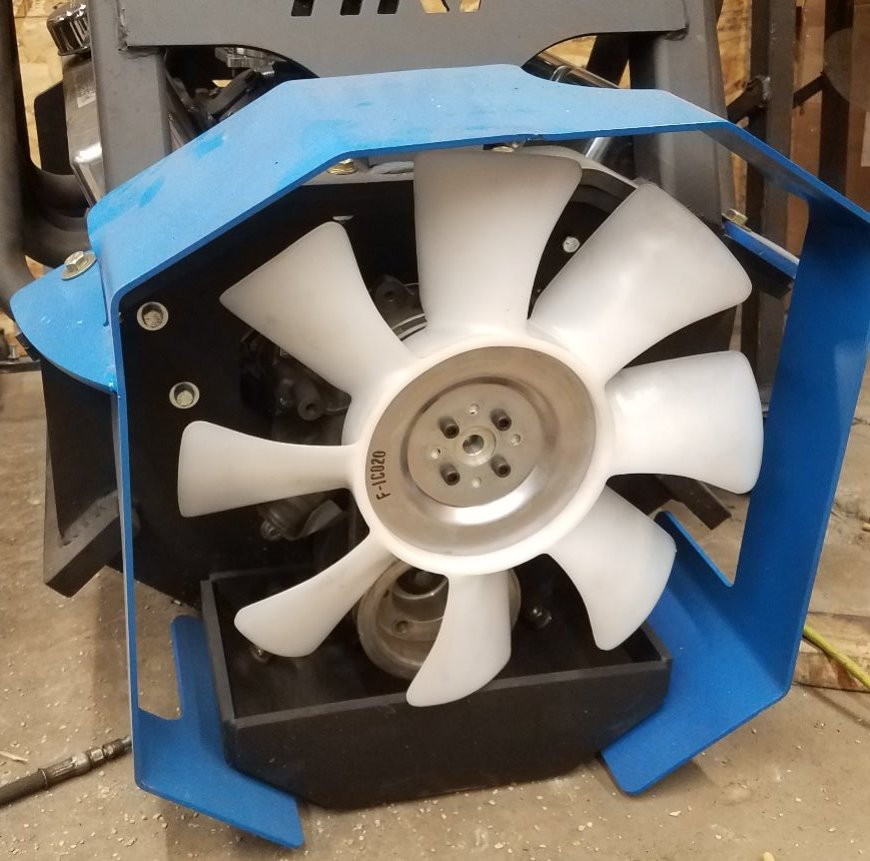

The improved performance is mainly because the outward flow is less contracted and thus carries more kinetic energy. In some cases, a shrouded rotor can be 94% more efficient than an open rotor. Ī Sailor checks the ducted propeller of a Landing Craft Air Cushion (LCAC) Hovercraftĭucted fans are favored in VTOL aircraft such as the Lockheed Martin F-35 Lightning II, and other low-speed designs such as hovercraft for their higher thrust-to-weight ratio.

At high angle of attack, parts of the duct will stall and produce aerodynamic drag.Complex duct design, and weight increase even if constructed from advanced composites.
#Fan shroud free#
Requires reduced vibration levels compared to a free propeller or rotor.Efficiency advantages are reduced, and may even be reversed, at lower rotation speeds, thrust levels and airspeeds.Good efficiency requires very small clearances between the blade tips and the duct.It also eases the vehicle designer's task of integration with the vehicle and its systems. Īn advantage of the pod approach is that the design of each component can be matched to the others, helping to maximise performance and minimise weight. In the remote arrangement, several fans may be driven by a single powerplant.Īn assembly designed throughout as a single integrated unit is referred to as a fan pod or ducted propulsor. The fan may be mounted directly on the powerplant output shaft, or driven remotely via an extended drive shaft and gearing. Examples include piston, rotary (Wankel), and turboshaft combustion engines, as well as electric motors. Powerplant Ī ducted fan may be powered by any kind of motor capable of turning the fan. With careful design, the heated discharge from the engine cooling system can be injected into the low-turbulence fan wake to increase thrust. The reduced tip vortices also mean that the fan wake is less turbulent. It acts as a protective device, both to protect objects such as ground staff from being hit by the whirling blades, and to protect the blades from damage during such an impact. It provides acoustic shielding which, together with the reduced energy waste, significantly cuts noise emissions from the propeller. Because of this, the fan can either be used to provide increased thrust and aircraft performance, or be made smaller than the equivalent free propeller. This reduces the aerodynamic losses or drag, thus increasing the overall efficiency of the fan. Principally, it reduces the vortices created by air flowing round the ends of the blades. It must be made rigid enough not to distort under flight loads nor touch the blades as they turn. The duct or shroud is an aerodynamic ring which surrounds the fan and closely fits the blade tips. The blades may be of fixed or variable pitch. The Rhein Flugzeugbau (RFB) SG 85 had three blades, while the Dowty Rotol Ducted Propulsor had seven. Like any other fan, propeller or rotor, a ducted fan is characterised by the number of blades. Lastly, when at high angles of attack, the shroud can stall and produce high drag.Ī ducted fan has three main components the fan or propeller which provides thrust or lift, the duct or shroud which surrounds the fan, and the engine or motor which powers the fan. By varying the cross-section of the duct the designer can advantageously affect the velocity and pressure of the airflow according to Bernoulli's principle.ĭrawbacks include increased weight due to the added structure of the shroud, a need for precision in tolerances of blade-tip to shroud clearance, a need for better vibration control compared to free-air propellers, and complex duct design requirements. The shroud offers good protection to ground personnel from accidentally contacting the spinning blades, as well as protecting the blades themselves from external debris or objects. Ducted fans are quieter, and offer good opportunities for thrust vectoring. The duct increases thrust efficiency by up to 90% in some cases, in comparison to a similar-sized propeller in free air. The high-bypass turbofan engines used on many modern airliners is an example of a very successful and popular use of ducted fan design. ĭucted fans are used for propulsion or direct lift in many types of vehicle including aeroplanes, airships, hovercraft, and powered lift VTOL aircraft. ( VTOL) applications it is also known as a shrouded rotor. When used in vertical takeoff and landing Other terms include ducted propeller or shrouded propeller. In aeronautics, a ducted fan is a thrust-generating mechanical fan or propeller mounted within a cylindrical duct or shroud.


 0 kommentar(er)
0 kommentar(er)
